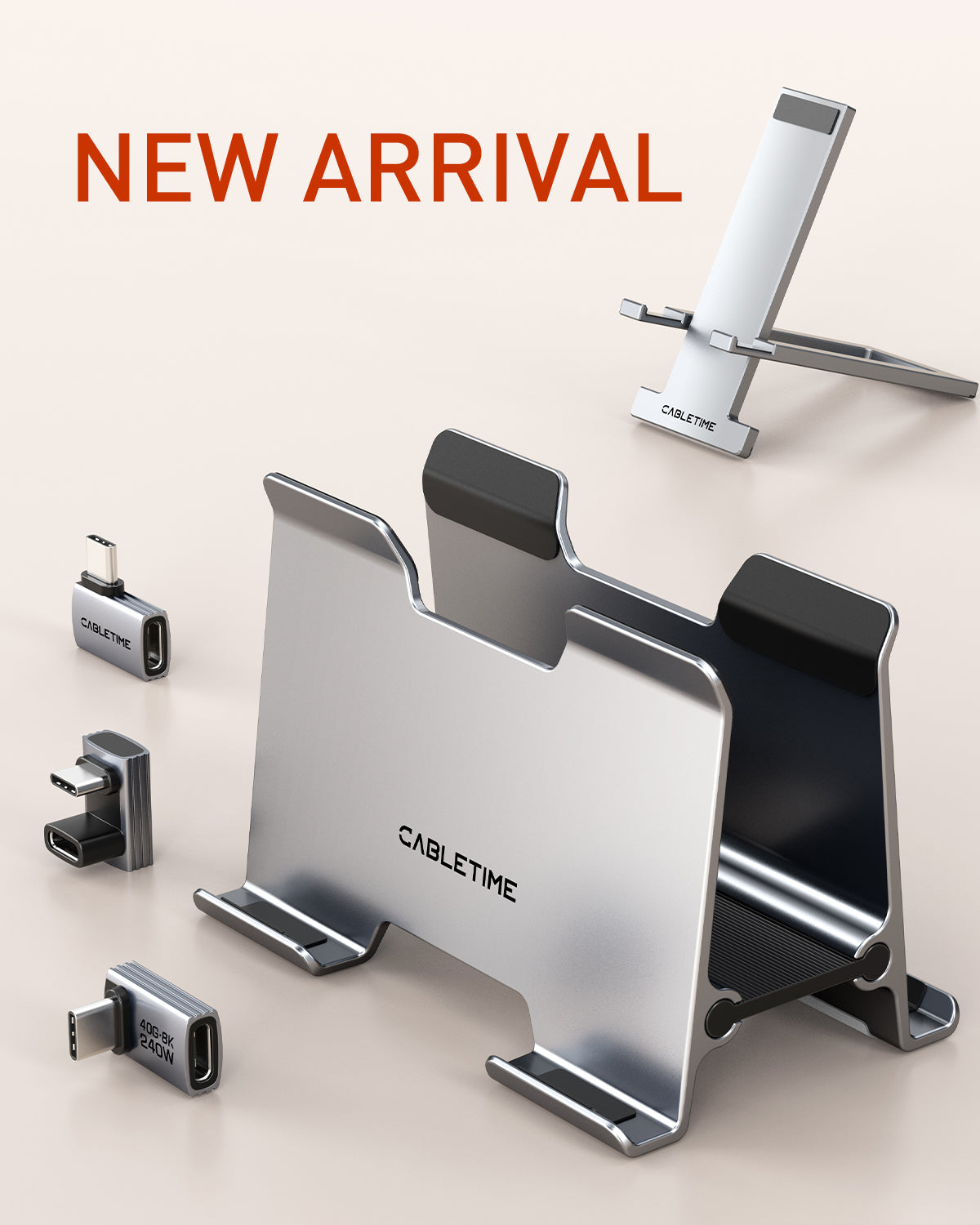I dagens underholdnings- og spilsystemer er HDMI-porte i stigende grad efterspurgte, men de fleste tv'er og skærme tilbyder simpelthen ikke nok. Det er her, en HDMI-switch bliver uvurderlig. Uanset om du sætter spillekonsoller som PS5 og Xbox Series X op, tilslutter streamingenheder eller nyder film fra Blu-ray-afspillere, sikrer en HDMI-switch af høj kvalitet problemfri skift mellem enheder uden konstant at skulle frakoble kabler.
Denne detaljerede guide dækker vigtige aspekter af HDMI-switchere, inklusive installationstrin, råd om fejlfinding og de bedste anbefalinger fra CABLETIME, der forbedrer din underholdningsoplevelse.

Hvad er en HDMI-switcher?
En HDMI-switcher forbinder flere HDMI-kilder – såsom spillekonsoller, bærbare computere, streamingenheder og medieafspillere – til en enkelt HDMI-indgang på din skærm. Du kan vælge signalet fra din valgte enhed manuelt, automatisk eller via fjernbetjening, hvilket forbedrer kabelhåndteringen betydeligt.
Tænk på en HDMI-switch som en digital trafikcontroller:
- Indgangssignaler: Hver HDMI-indgangsport modtager digitale lyd- og videosignaler fra forskellige tilsluttede enheder.
- Skiftemekanisme: Det aktive input vælges manuelt (tryk på en knap), automatisk (tænding af enheden) eller eksternt (infrarød fjernbetjening).
- Udgangstransmission: Det valgte signal sendes via én HDMI-udgang til dit tv eller din skærm.
- HDCP-overholdelse: Kvalitets-HDMI-switche understøtter HDCP (High-bandwidth Digital Content Protection), hvilket sikrer problemfri streaming fra beskyttede indholdstjenester som Netflix, Disney+ eller Amazon Prime.
HDMI-switche kan være passive (drevet af HDMI-signaler) eller aktive (kræver ekstern strøm), især til højere opløsninger eller længere kabelstrækninger.
Typer af HDMI-switche
- Manuelle HDMI-switche: Kræver manuel valg via knapper. Ideel til præcis kontrol, men mindre praktisk ved hyppigt skiftende opsætninger.
- Automatiske HDMI-switche: Registrer automatisk aktive enheder. Bemærk, at visse enheder som Apple TV eller specifikke spillekonsoller muligvis ikke udløser automatisk skift pålideligt.
- Fjernstyrede HDMI-switche: Inkluder en infrarød fjernbetjening, ideel til komfortabel skift af enheder på afstand, især nyttig i hjemmebiografopsætninger.

Hvornår har du brug for en HDMI-switch?
- Spilopsætninger: Tilslut flere spillekonsoller (PS5, Xbox Series X, Nintendo Switch) til én højtydende skærm.
- Hjemmebiografsystemer: Tilslut nemt Blu-ray-afspillere, streamingenheder og soundbars.
- Multifunktionelle arbejdsstationer: Skift nemt mellem bærbare og stationære computere, der deler en skærm.
- Konferencelokaler: Del skærme fra flere bærbare computere eller mobile enheder på en central skærm
Nøglefunktioner at overveje ved valg HDMI-switch
- Antal porte: Vælg switche, der tilbyder mindst en eller to ekstra porte ud over de nuværende behov.
- Opløsning og opdateringshastighed: 1. HDMI 2.1: Støtter 8K@60Hz, 4K@120Hz, Variabel opdateringshastighed (VRR) og Auto Low Latency Mode (ALLM) til avancerede spilopsætninger. 2. HDMI 2.0: Velegnet til standard 4K@60Hz with HDR-understøttelse.
- Lydunderstøttelse: Kig efter understøttelse af HDMI ARC (Audio Return Channel), CEC (Consumer Electronics Control) og avancerede lydformater som Dolby Atmos og DTS-HD.
- Spilspecifikke funktioner: Sørg for, at switchen understøtter VRR, ALLM og minimal input lag for optimal gaming.
- Typer af HDMI-switche: Manuel knap eller IR-fjernbetjening HDMI-switch










Efterlad en kommentar
Denne side er beskyttet af hCaptcha, og hCaptchas Politik om beskyttelse af persondata og Servicevilkår er gældende.